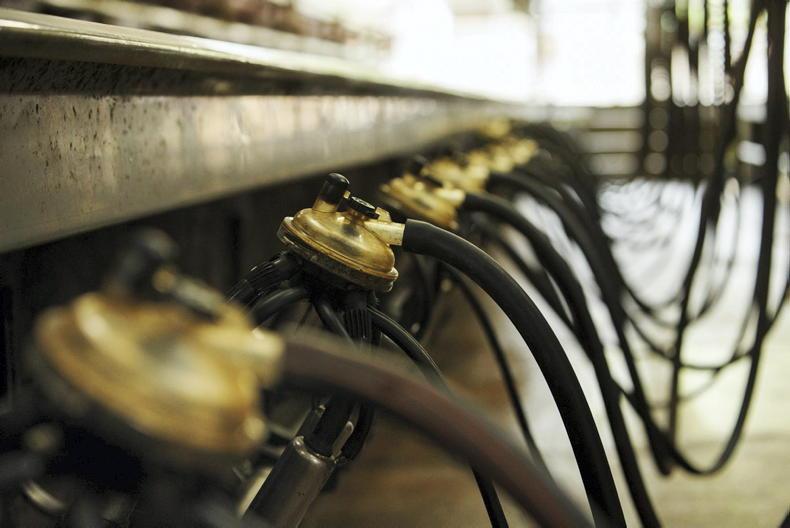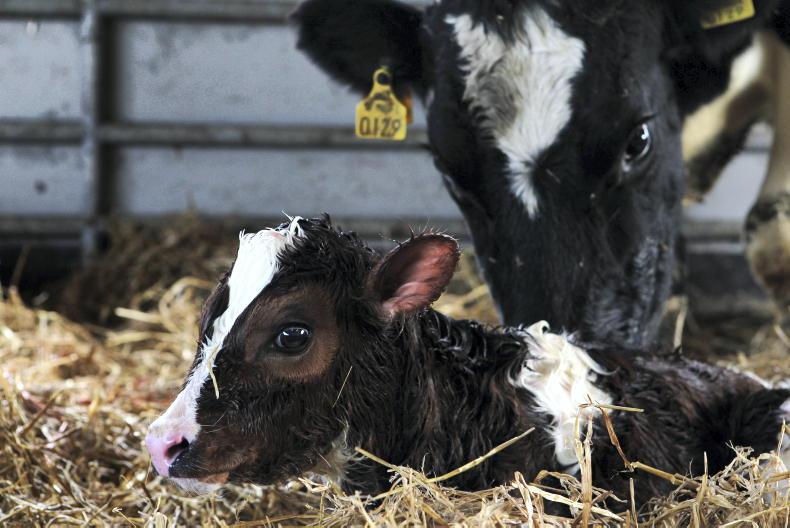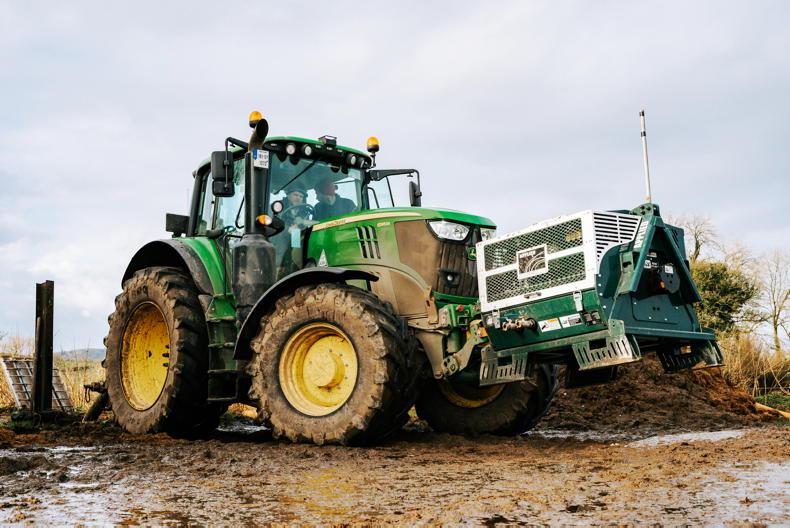Dairy farm incomes have never been as strong but there are dark clouds on the horizon.
Tighter rules around nitrates, the threat posed by climate policy and higher input and land-leasing costs are threatening to cut into the record profits delivered in 2022.
However, for the next 12 weeks, these concerns will take a backseat to the issue of labour supply – arguably the most pressing problem facing dairy farmers.
Indeed, such are the difficulties posed by the shortage of workers that the dual challenges of labour and nitrates have been likened to the sector’s “new quota” because they are effectively putting the brakes on further expansion.
There are no firm figures on how many full-time and part-time workers are needed this spring by farmers.
However, anecdotal evidence suggests that it could top the thousand mark.
“You hear lads talking at discussion groups and at least half of them are looking for somebody,” one farmer said.
This view is supported by the high number of newspaper and online adverts for staff. The vacancies range from farm managers and assistant managers to milkers and seasonal staff.
With more than 1.5m cows and heifers due to calve by early April, the pressure is on to source staff.
Kate Fogarty of the Grasstec Group described the demand for labour on farms as “cruel”.
Grasstec is involved in bringing in staff from Romania at the moment. This will augment the 500 permits that have been approved for workers from outside the EU.
“We have 68 workers on the ground already and I’ll try and get as far as 100. But we need 40 to 45 more for the farmers we have booked in at moment,” Fogarty said.
While some find the workload a challenge, most adapt to the pace and I’d say that around 75% work out
“The Romanian workers we’re bringing have basic farm experience,” she explained.
“While some find the workload a challenge, most adapt to the pace and I’d say that around 75% work out,” Fogarty said.
These workers are paid the minimum wage plus holiday pay. In addition, the farmer must also provide accommodation.
While both the IFA and ICMSA have welcomed the provision of additional permits for non-EU workers for the dairy sector, they have also stressed that improved technology – such as automatic calf feeders – can help to reduce on-farm staff requirements.
Indeed, the IFA’s Stephen Arthur has described plans to remove grant aid for dairy equipment as “foolhardy in the extreme” given the current shortage of labour facing farmers.
Colin Donnery, CEO of Farm Relief Services (FRS), suggested that the answer to the labour issue this spring will involve a combination of local and foreign workers, better use of technology and a flexible approach by farmers.
“The full-time [worker] side of things is a challenge. Two out of three farmers are struggling to source labour,” Donnery explained.
Applications
“We’re getting applications through but we have to trawl far and wide. But we’re using students to cover weekends and that’s helping,” he added.
Wexford farmer Liam Curtis maintained that farmers needed to be more creative in how they approach the spring workload.
“I know lads who contract out the night calving. Farmers also need to ask if they can get somebody to run the calf shed morning and evening. These people are out there but farmers haven’t woken up to it,” Curtis claimed.
One midlands-based dairy farmer, who did not wish to be named, pointed out that modern farming was now about managing cows, grass and people.
He said all three elements are equally important.
“Farmers need to be realistic in their expectations of the people they hire. And they need to relinquish some control, and trust the people to do their job. The alternative is more stress and ultimately burnout,” he maintained.
Reviving the farm apprenticeship
programme
The emerging labour crisis on dairy farms this spring has reignited the debate on the need for a dedicated agricultural apprenticeship scheme or training programme.
Supporters of such an initiative argue that a properly structured apprenticeship programme could potentially provide a pipeline of homegrown trained operators to work in the dairy sector.
It would also negate the need for the industry to source foreign workers in eastern Europe and outside the EU.
A two-year farm technician apprenticeship is in the process of being approved, but farmers say this course will need to be fast-tracked.
While Government approval for the granting of 500 non-EU work permits for dairy farms will certainly improve the on-farm labour situation in the medium term, industry sources maintained that this move will not address the serious shortage of staff this spring and it is not a realistic long-term solution.
It used to be the case that there was a lot of available labour in rural areas, but that has all dried up
Moreover, although around 20 students graduate from Teagasc’s diploma in dairy farm management course each year, Wexford farmer and Farm Relief Services (FRS) board member Liam Curtis estimated that in excess of 100 trained apprentices per year are needed to meet the ongoing labour requirements on dairy farms.
He maintained that the industry should be capable of putting an apprenticeship programme in place.
“I don’t know the ins and outs of what’s required but the industry should be able to make it happen,” Curtis said.
He pointed out that students who completed the old Farm Apprenticeship Board training in the 1970s to 1990s were invariably snapped up by other industries because of the graduates’ work ethic and their innate ability to “get the job done”.
Another who is open to the apprenticeship approach is Colin Donnery, CEO of FRS.
“It used to be the case that there was a lot of available labour in rural areas, but that has all dried up,” Donnery said.
Skillset
The skillset required of farm workers has also grown, as a consequence of increased mechanisation and the more stringent standards required in areas such as medicine usage.
In terms of full-time operators, farmers require workers who are good with livestock, and particularly cows, and are competent around machinery, Donnery explained.
However, getting such people is not a simple task in a very competitive labour market.

The skillset required of farm workers has grown.
The farm sector now needs to actively compete for labour and this could only be achieved by offering attractive pay rates, good conditions and a clear career path for new entrants, he maintained.
Competition
“We should really try to get to the people who don’t go to college and get them into farming. But we will be competing with construction and hospitality.
“We have to create careers for people and offer structured career paths. We need to get good qualified people that are going to stay on farms,” he added.
Similar views were expressed by ICMSA president Pat McCormack.
“Permanent employment on a farm will have to be seen as an attractive career option for young people if we are going to resolve the labour shortage.
“This will require suitable training options, along with the possibility of progression, be it within a particular farm or to move to a new role on another farm,” he added.
Worker view: ‘I’ll never milk a cow for anyone again’
There is an acceptance in the agricultural sector that many farmers make poor employers.
This is often attributed to, and excused by, farmers’ own workplace experience or inexperience.
“Ninety-five per cent of farmers have never worked for anyone else except their fathers or themselves. They have no understanding of HR [human resources] and they think employees should go as hard and get through as much work as themselves,” one farmer explained.
While this attitude may be on the wane, the experience of some workers confirms that it has not disappeared.
John [not his real name] worked on dairy farms for more than 15 years after completing his time in agricultural college.
I asked the farmer for an apology but I didn’t get it so I left
However, he left the industry last year and is adamant that he will not return.
He alleges that he was bullied and verbally abused on the last farm on which he worked.
“I asked the farmer for an apology but I didn’t get it so I left,” he said.
He was subsequently in contact with other farmers about work but failed to agree terms with them as they were looking for someone to commit to weekend cover.
His unwillingness to do this resulted in him receiving abusive texts from the farmers, he claimed.
Disillusioned
The experience has left him totally disillusioned with the dairy industry.
“I’ll never stand in a dairyman’s yard again,” John told the Irish Farmers Journal.
He claimed that conditions for workers on many holdings have deteriorated as a consequence of expansion, with the workload and pressure having increased in line with cow numbers.
“I was working as a farm manager on the same farm for more than 10 years and sometimes worked up to 70 or 80 hours a week. And I only ever missed two days in that time,” John explained.
“But I never knew for sure when I had a weekend off, and I never got anything extra for a bank holiday Monday. Maybe that was my own fault, but I loved the job and I loved farming,” he said.
After that farm exited dairying, John was let go with just the minimum of notice. He then moved to the farm where the alleged bullying incident occurred.
John is now in the process of securing work in manufacturing and is looking forward to the challenge and also the set hours.
Although he misses farming, he is certain he will not work on the land again.
“I have a lot of very good friends who are dairy farmers but I’ll never milk a cow for anyone again.”
He asked why farmers who are employing staff are not required to do a course or be approved in some way, given that such approval is needed to work a sprayer or even keep livestock.
Dairy farm incomes have never been as strong but there are dark clouds on the horizon.
Tighter rules around nitrates, the threat posed by climate policy and higher input and land-leasing costs are threatening to cut into the record profits delivered in 2022.
However, for the next 12 weeks, these concerns will take a backseat to the issue of labour supply – arguably the most pressing problem facing dairy farmers.
Indeed, such are the difficulties posed by the shortage of workers that the dual challenges of labour and nitrates have been likened to the sector’s “new quota” because they are effectively putting the brakes on further expansion.
There are no firm figures on how many full-time and part-time workers are needed this spring by farmers.
However, anecdotal evidence suggests that it could top the thousand mark.
“You hear lads talking at discussion groups and at least half of them are looking for somebody,” one farmer said.
This view is supported by the high number of newspaper and online adverts for staff. The vacancies range from farm managers and assistant managers to milkers and seasonal staff.
With more than 1.5m cows and heifers due to calve by early April, the pressure is on to source staff.
Kate Fogarty of the Grasstec Group described the demand for labour on farms as “cruel”.
Grasstec is involved in bringing in staff from Romania at the moment. This will augment the 500 permits that have been approved for workers from outside the EU.
“We have 68 workers on the ground already and I’ll try and get as far as 100. But we need 40 to 45 more for the farmers we have booked in at moment,” Fogarty said.
While some find the workload a challenge, most adapt to the pace and I’d say that around 75% work out
“The Romanian workers we’re bringing have basic farm experience,” she explained.
“While some find the workload a challenge, most adapt to the pace and I’d say that around 75% work out,” Fogarty said.
These workers are paid the minimum wage plus holiday pay. In addition, the farmer must also provide accommodation.
While both the IFA and ICMSA have welcomed the provision of additional permits for non-EU workers for the dairy sector, they have also stressed that improved technology – such as automatic calf feeders – can help to reduce on-farm staff requirements.
Indeed, the IFA’s Stephen Arthur has described plans to remove grant aid for dairy equipment as “foolhardy in the extreme” given the current shortage of labour facing farmers.
Colin Donnery, CEO of Farm Relief Services (FRS), suggested that the answer to the labour issue this spring will involve a combination of local and foreign workers, better use of technology and a flexible approach by farmers.
“The full-time [worker] side of things is a challenge. Two out of three farmers are struggling to source labour,” Donnery explained.
Applications
“We’re getting applications through but we have to trawl far and wide. But we’re using students to cover weekends and that’s helping,” he added.
Wexford farmer Liam Curtis maintained that farmers needed to be more creative in how they approach the spring workload.
“I know lads who contract out the night calving. Farmers also need to ask if they can get somebody to run the calf shed morning and evening. These people are out there but farmers haven’t woken up to it,” Curtis claimed.
One midlands-based dairy farmer, who did not wish to be named, pointed out that modern farming was now about managing cows, grass and people.
He said all three elements are equally important.
“Farmers need to be realistic in their expectations of the people they hire. And they need to relinquish some control, and trust the people to do their job. The alternative is more stress and ultimately burnout,” he maintained.
Reviving the farm apprenticeship
programme
The emerging labour crisis on dairy farms this spring has reignited the debate on the need for a dedicated agricultural apprenticeship scheme or training programme.
Supporters of such an initiative argue that a properly structured apprenticeship programme could potentially provide a pipeline of homegrown trained operators to work in the dairy sector.
It would also negate the need for the industry to source foreign workers in eastern Europe and outside the EU.
A two-year farm technician apprenticeship is in the process of being approved, but farmers say this course will need to be fast-tracked.
While Government approval for the granting of 500 non-EU work permits for dairy farms will certainly improve the on-farm labour situation in the medium term, industry sources maintained that this move will not address the serious shortage of staff this spring and it is not a realistic long-term solution.
It used to be the case that there was a lot of available labour in rural areas, but that has all dried up
Moreover, although around 20 students graduate from Teagasc’s diploma in dairy farm management course each year, Wexford farmer and Farm Relief Services (FRS) board member Liam Curtis estimated that in excess of 100 trained apprentices per year are needed to meet the ongoing labour requirements on dairy farms.
He maintained that the industry should be capable of putting an apprenticeship programme in place.
“I don’t know the ins and outs of what’s required but the industry should be able to make it happen,” Curtis said.
He pointed out that students who completed the old Farm Apprenticeship Board training in the 1970s to 1990s were invariably snapped up by other industries because of the graduates’ work ethic and their innate ability to “get the job done”.
Another who is open to the apprenticeship approach is Colin Donnery, CEO of FRS.
“It used to be the case that there was a lot of available labour in rural areas, but that has all dried up,” Donnery said.
Skillset
The skillset required of farm workers has also grown, as a consequence of increased mechanisation and the more stringent standards required in areas such as medicine usage.
In terms of full-time operators, farmers require workers who are good with livestock, and particularly cows, and are competent around machinery, Donnery explained.
However, getting such people is not a simple task in a very competitive labour market.

The skillset required of farm workers has grown.
The farm sector now needs to actively compete for labour and this could only be achieved by offering attractive pay rates, good conditions and a clear career path for new entrants, he maintained.
Competition
“We should really try to get to the people who don’t go to college and get them into farming. But we will be competing with construction and hospitality.
“We have to create careers for people and offer structured career paths. We need to get good qualified people that are going to stay on farms,” he added.
Similar views were expressed by ICMSA president Pat McCormack.
“Permanent employment on a farm will have to be seen as an attractive career option for young people if we are going to resolve the labour shortage.
“This will require suitable training options, along with the possibility of progression, be it within a particular farm or to move to a new role on another farm,” he added.
Worker view: ‘I’ll never milk a cow for anyone again’
There is an acceptance in the agricultural sector that many farmers make poor employers.
This is often attributed to, and excused by, farmers’ own workplace experience or inexperience.
“Ninety-five per cent of farmers have never worked for anyone else except their fathers or themselves. They have no understanding of HR [human resources] and they think employees should go as hard and get through as much work as themselves,” one farmer explained.
While this attitude may be on the wane, the experience of some workers confirms that it has not disappeared.
John [not his real name] worked on dairy farms for more than 15 years after completing his time in agricultural college.
I asked the farmer for an apology but I didn’t get it so I left
However, he left the industry last year and is adamant that he will not return.
He alleges that he was bullied and verbally abused on the last farm on which he worked.
“I asked the farmer for an apology but I didn’t get it so I left,” he said.
He was subsequently in contact with other farmers about work but failed to agree terms with them as they were looking for someone to commit to weekend cover.
His unwillingness to do this resulted in him receiving abusive texts from the farmers, he claimed.
Disillusioned
The experience has left him totally disillusioned with the dairy industry.
“I’ll never stand in a dairyman’s yard again,” John told the Irish Farmers Journal.
He claimed that conditions for workers on many holdings have deteriorated as a consequence of expansion, with the workload and pressure having increased in line with cow numbers.
“I was working as a farm manager on the same farm for more than 10 years and sometimes worked up to 70 or 80 hours a week. And I only ever missed two days in that time,” John explained.
“But I never knew for sure when I had a weekend off, and I never got anything extra for a bank holiday Monday. Maybe that was my own fault, but I loved the job and I loved farming,” he said.
After that farm exited dairying, John was let go with just the minimum of notice. He then moved to the farm where the alleged bullying incident occurred.
John is now in the process of securing work in manufacturing and is looking forward to the challenge and also the set hours.
Although he misses farming, he is certain he will not work on the land again.
“I have a lot of very good friends who are dairy farmers but I’ll never milk a cow for anyone again.”
He asked why farmers who are employing staff are not required to do a course or be approved in some way, given that such approval is needed to work a sprayer or even keep livestock.











SHARING OPTIONS